 Abraham Lincoln
If given the truth, the people can be depended upon to meet any national crisis...
Abraham Lincoln
If given the truth, the people can be depended upon to meet any national crisis...
 Guildford news...
for Guildford people, brought to you by Guildford reporters - Guildford's own news service
Guildford news...
for Guildford people, brought to you by Guildford reporters - Guildford's own news service
Book Review: Holy Trinity, St Mary’s and Pewley Down Schools
Published on: 1 Jan, 2023
Updated on: 31 Dec, 2022
Holy Trinity and St Mary’s 1812 to Holy Trinity Pewley Down 2015 A school history, by Margaret Clements and Richard Rowe
Review by David Rose
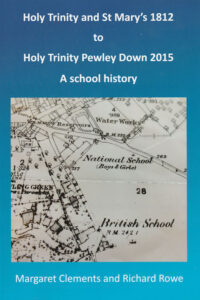
The front cover of the book.
The written history of Guildford’s schools and education is rather patchy and continues to be somewhat overlooked. Several books have been written and published on individual schools. This book is the latest addition and is absolutely superb!
In 2012 Holy Trinity Junior School celebrated the 200th anniversary of the founding of Holy Trinity and St Mary’s National School in 1812.
I wrote a story for The Guildford Dragon NEWS ahead of the celebration as I had been given access to the school’s fascinating collection of vintage photos and logbooks.
There was a further story and photos of the school’s celebration tea party.
It was obvious that with such a wealth of information in the school’s archives a book on the history of the schools would be possible.
And Margaret Clements, who had been a parent governor and whose children had attended Pewley Down First School and Holy Trinity Middle School, has done just that.
Her meticulous research has gone beyond the collection of material at today’s school and therefore includes archive material from the Guildford Institute, the Surrey History Centre and the National Archives, plus memories and tales from former pupils, and with the final chapter written by former head teacher Richard Rowe, which is a fantastic insight into the school under his tenure (1990 to 2015).
The story of these schools and the changes in education over the years, as told in Margaret’s book, I would say very much mirrors the stories of Guildford’s schools for the majority of its people.
Especially as the story goes back more than 200 years – that’s a few decades before the town really began to grow!
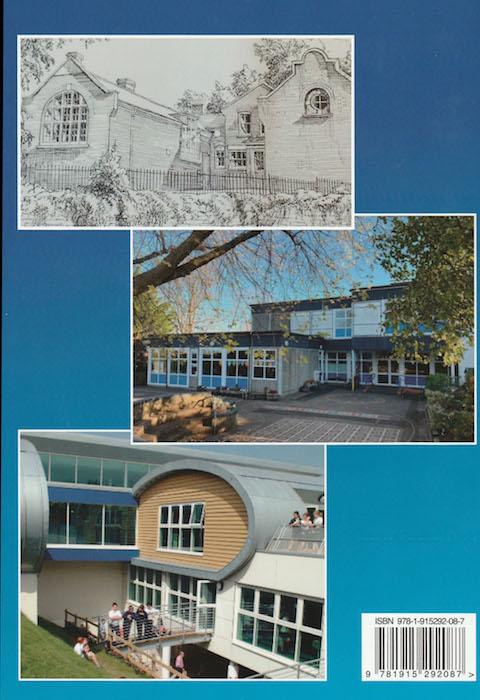
Pictures on the back cover of the book.
As Margaret writes in her introduction, the story as told is…. “Holy Trinity and St Mary’s National School was one of many ‘planted’ in Church of England parishes from 1811 onwards. In 1812, the school, on a triangle of land between Pewley Hill and South Hill, took pupils from four years old upwards, the leaving age rising as educational policy, and the organisation of school locally changed, but the name remained Holy Trinity and St Mary’s School for 100 years. Sometime in the early 20th century the St Mary’s part of the titles appears to have been dropped largely, and former pupils of the 1930s and 40s, who have offered their reminiscences, speak only of Holy Trinity School. In the early 1970s the infants moved to Semaphore Road becoming Pewley Down Infant School, then Pewley Down School (1976), before reverting back to infants in the 1990s. With the removal of the infants from Pewley Hill, and following the same timing, the upper four years became Holy Trinity Junior School, then Holy Trinity Middle School, before reverting back to Holy Trinity Junior School. From 2010, while occupying two sites and with two names, the school again began to operate as one, a ‘Federation’: Holy Trinity Pewley Down School.”
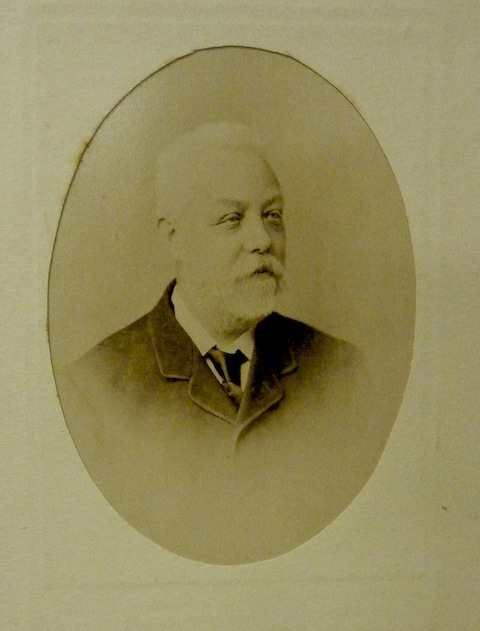
Joseph Ball.
However, the book is much more than name changes and dates. Interwoven are, for example, of how the buildings changed, and stories of teachers and their pupils as changes in education came about.
Husband and wife, Joseph and Mary Ball, were headmaster and headmistress respectively for 25 years from 1869 to 1895. Their story and their tireless and dedication to the work they did for their pupils, despite Joseph’s prolonged ill-health, is a delight to read. Their place in Guildford’s history should be much better known. Margaret’s book may help to do this!
School logbooks really do give a great insight into the day-to-day happenings, as well as punishment books. Fortunately, one such book from the school from 1938 into the 1940s survives.
Margaret writes…. “Punishment took the form of a given number of strokes on the cane on the ‘S’ = seat or ‘H’ = hand. Once a month the book was inspected and signed by a member of the school management committee.
One of those listed in the punishment book during 1943 was John Foster. In Margaret’s book his memories are given and, in an email to Margaret, he wrote: “I don’t think I was too bad. I can’t remember some of the incidents but then corporal punishment was the norm of those days for quite normal misdemeanours. Mr Goodson always shook hands with you afterwards saying, ‘you took your punishment like a man, now try not to see me again’.”
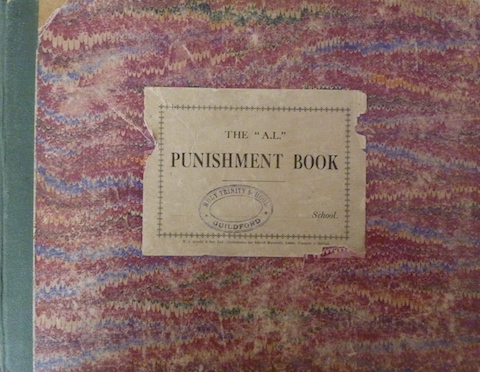
Punishment book.
From 1946 to 1970, the headmaster was Gilbert Brown. This section of the book not only gives details of the changes that took place, the curriculum at the time and also some great photos of pupils, including swimming at the Castle Street baths.

Class 5 (1968) with teacher Mr P. McCartney.
Barry Williams then became the headmaster and of his time at the school Margaret writes that he energetically began making his mark on the school with a whirlwind of activities. He was particularly enthusiastic about sport, music and drama, was a very competent pianist, made considerable efforts to get to know the children and their parents, and endeavoured to teach in every class.
It was during his headship that the new Holy Trinity Middle School was built at the end of Addison Road in Charlotteville, with the official opening by the Bishop of Guildford, on March 18, 1977.
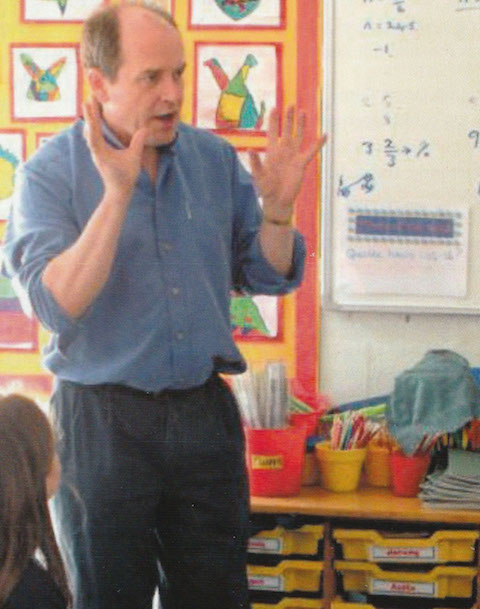
Former head teacher Richard Rowe.
The final chapter is written by former head teacher Richard Rowe. I found this particularly interesting as he writes with so much sincerity about the developments that took place by him and his staff, many of whom receive special mention. Included are changes he mades as well to those imposed by government including to the national curriculum, Standard Attainment Tests (SATs), Ofsted inspections, and so on.
Just one of Richard’s paragraphs reads: “Joseph Ball, the headmaster of the late nineteenth century, had adopted ‘Duty’ as the single word motto of the school. This had fallen out of use and its meaning and relevance become outdated. It was time for a new ‘strap-line’ and I invited the teachers to come up with ideas. Margaret Hannam suggested ‘Live to Learn’ which I thought was good but did not quite sum up what we were trying to achieve. By transposing the words into – ‘Learn to Live’ – that seemed to be approved by everybody and it stuck. We then added Jesus words from Matthew’s Gospel Chapter 12 and verse 12: ‘I have come that you may have life – life in all it’s fulness.”
School life, in all it’s fulness, is certainly here in this book. It will certainly appeal to former pupils and anyone interested in Guildford’s history and development.
Margaret Clements has copies for sale, for just £10, and well worth every penny. To order a copy, send an email to Margaret at mcHTschoolhistory@gmail.com
Recent Articles
- Guildford Institute’s Crowdfunding Project for Accessible Toilet in its New Community and Wellbeing Centre
- Letter: Guildford – Another Opportunity Missed?
- Letter: GBC’s Corporate Strategy – Where Is the Ambition?
- My Memories of John Mayall at a Ground-breaking Gig in Guildford Nearly Six Decades Ago
- Westborough HMO Plans ‘Losing the Heart of the Street’ Says Resident
- College Invests to Boost Surrey’s Economy and Close Digital Skills Gap
- Community Lottery Brings Big Wins for Local Charities
- GBC Housing Plan Promises ‘A Vibrant Urban Neighbourhood’ Near Town Centre
- Hospital Pillows ‘Shortage’ at the Royal Surrey
- Updated: Caravans Set Up Camp at Ash Manor School


Search in Site
Media Gallery
Dragon Interview: Local Artist Leaves Her Mark At One of England’s Most Historic Buildings
January 21, 2023 / No Comment / Read MoreDragon Interview: Lib Dem Planning Chair: ‘Current Policy Doesn’t Work for Local People’
January 19, 2023 / No Comment / Read MoreA3 Tunnel in Guildford ‘Necessary’ for New Homes, Says Guildford’s MP
January 10, 2023 / No Comment / Read More‘Madness’ for London Road Scheme to Go Ahead Against ‘Huge Opposition’, Says SCC Leader
January 6, 2023 / No Comment / Read MoreCouncillor’s Son Starts Campaign for More Consultation on North Street Plan
December 30, 2022 / No Comment / Read MoreCounty Council Climbs Down Over London Road Works – Further ‘Engagement’ Period Announced
December 14, 2022 / No Comment / Read MoreDragon Interview: GBC Reaction to the Government’s Expected Decision to Relax Housing Targets
December 7, 2022 / No Comment / Read MoreHow Can Our Town Centre Businesses Recover? Watch the Shop Front Debate
May 18, 2020 / No Comment / Read More









Recent Comments